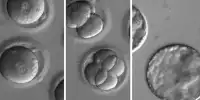Genetically Modified Food (or GM Food) Foods produced from plants or animals whose DNA has been modified by genetic engineering. Genetic engineering techniques allow for greater control over traits as well as introducing new features compared to previous methods, such as comparative selection reproduction and mutation breeding. The combination of genes in different organisms is known as recombinant DNA technology and as a result, the organism is called ‘genetically modified (GM)’, ‘genetically engineered’ or ‘transgenic’. The main transgenic crops grown commercially in the field are herbicides and pesticide-resistant soybeans, corn, cotton, and canola. Advocates say genetically modified (GM) foods allow farmers to produce more with fewer chemicals – meaning a cleaner environment and cheaper groceries for all of us.
The commercial sale of genetically modified foods began in 1994 when Calzine first marketed its failed flavored saver with delayed-ripe tomatoes. It is now known that there are several mechanisms for DNA transfer and that it occurs in a larger form in nature, for example, it is a major mechanism for antibiotic resistance in pathogenic bacteria. The first genetically modified (GM) plant using antibiotic-resistant tobacco plants was produced in 1983. To date, most studies have been done on animals; Worryingly, though, some of these studies have linked GM foods to altered metabolism, inflammation, kidney and liver defects, and reduced fertility. In one experiment, multiple generations of hamsters were fed a diet of GM soy; By the third generation, they were losing half their ability to produce offspring as a non-GM soy group.
There is a scientific sensitivity that food currently available from GM crops is no greater risk to human health than conventional food, but each GM diet needs to be examined on a case-by-case basis before being introduced. These include modified oil blends (Calgene), Bacillus thuringiensis (BT) corn (Ciba-Geigy), herbicide bromoxynil (Calgene), BT cotton (Monsanto), BT potato (Monsanto), resistant to soybean gluten (Cotton-resistant cotton),( Monsanto), virus-resistant squash (asgro) and extra-late ripe tomatoes (DnaP, Zeneca / gourmet and mansion) (Clive 2011). There were 35 clearances for commercially growing one transgender crop of 8 transgenic crops and carnations with 8 transgenic crops and 8 different traits up to the European Union (Clive 1996) in 1996. Other crops have been changed to prevent pests. Genetic engineering, however, can help to produce crops that are more prone to starvation or to produce more nutritious foods.
However, there are ongoing public concerns related to the rights of plant breeders owned by all new plant varieties corporations, including food safety, control, labeling, environmental impact, research methods, and some new GM seeds. Identifying genes for important traits – such as insect resistance or reimbursement of desired nutrients – is one of the most limiting steps of the process.















